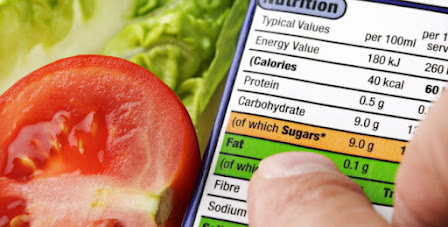The Vitality of Reading Food Labels: What to Look for and Why It Matters
In today's fast-paced world, where convenience and time-saving solutions often take precedence, it's easy to overlook the importance of reading food labels. However, the truth is that understanding and scrutinizing the information provided on those labels can significantly impact our health and well-being. In this blog post, we'll explore the significance of reading food labels and discuss what to look for when examining them.
1. Making Informed Choices:
Reading food labels empowers us to make informed decisions about the food we consume. By scrutinizing the information provided, we can identify ingredients that may be harmful to our health or trigger allergies or intolerances. Moreover, labels can help us gauge the nutritional value of a product and ensure it aligns with our dietary goals and requirements.
2. Identifying Allergens and Intolerances:
Food labels play a crucial role in identifying potential allergens or ingredients that may trigger intolerances. By carefully reading labels, individuals with allergies or specific dietary restrictions can avoid products containing substances like gluten, nuts, dairy, or soy. This knowledge is invaluable in preventing adverse reactions and maintaining overall well-being.
3. Understanding Nutritional Composition:
Food labels provide a wealth of information regarding a product's nutritional content. They offer insights into the calorie count, macronutrient distribution, and micronutrient content of the food item. By paying attention to these details, we can make informed decisions about portion sizes and overall dietary balance, ensuring we consume essential nutrients while avoiding excessive amounts of less desirable ones.
4. Monitoring Sugar, Salt, and Fat Intake:
Excessive consumption of sugar, salt, and unhealthy fats can have detrimental effects on our health. Food labels provide information on the amounts of these substances present in a product, allowing us to monitor our intake. By being aware of hidden sugars, excessive sodium, or trans fats, we can actively make healthier choices, reducing the risk of developing chronic conditions such as diabetes, heart disease, or obesity.
5. Assessing Serving Sizes:
Food labels often present information about serving sizes and the number of servings per container. This knowledge is crucial to prevent overconsumption and accurately track our nutritional intake. By understanding the appropriate serving size, we can avoid mistakenly assuming a product is healthier than it actually is due to incorrect portion estimation.
6. Comparing and Selecting Healthier Options:
Reading food labels enables us to compare similar products and select healthier options. By comparing nutritional information, ingredient lists, and the presence of additives or preservatives, we can choose products that align with our dietary goals. This practice promotes overall well-being and helps maintain a balanced and nutritious diet.
Reading food labels should be an integral part of our grocery shopping routine. By paying attention to the information provided, we can make informed choices, avoid allergens or intolerances, monitor our nutritional intake, and select healthier options. Remember, the small effort invested in reading food labels can lead to significant long-term benefits for our health and well-being. So, let's make it a habit to be label-savvy and take charge of our dietary choices.

Comments
Post a Comment